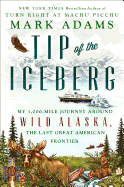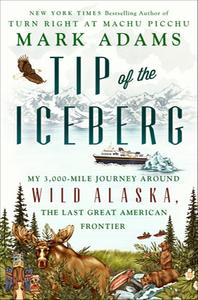
 After several years editing magazines like Outside, GQ and National Geographic Adventure, Mark Adams decided that it was do-or-die time for him to take on some actual vagabond travel writing. He chose to re-create the discovery of Machu Picchu, recounted in his popular Turn Right at Machu Picchu (because, as he said in a GQ interview: "Machu Picchu, for travel magazines, is like Megan Fox on the cover of GQ.")
After several years editing magazines like Outside, GQ and National Geographic Adventure, Mark Adams decided that it was do-or-die time for him to take on some actual vagabond travel writing. He chose to re-create the discovery of Machu Picchu, recounted in his popular Turn Right at Machu Picchu (because, as he said in a GQ interview: "Machu Picchu, for travel magazines, is like Megan Fox on the cover of GQ.")
A little closer to home this time, his new history-cum-adventure takes him to Alaska to follow in the footsteps of John Muir et al. on the 1899 scientific expedition financed by railroad tycoon Edward H. Harriman. Tip of the Iceberg is both the amusing travelogue of a city dude rolling his first kayak and a sound history based on Muir's journals, Aleut artifacts, a little geography and geology, and ample quirky statistics.
The hero of Adams's tale is Alaska itself--"essentially a small continent: big enough to hold Texas, California, Montana... and still have room for all of New England, Hawaii, and a couple of metropolises." It is a state whose waterfront accounts for half the coastline of the whole United States. Its acquisition by the United States from Russia in 1867 was tagged "Seward's Folly," but Seward got a raw deal. As Adams demonstrates with wit and insight, it might better be called "Seward's Steal" if measured only in natural beauty.
As Adams makes his way up the Inside Passage a century after the Harriman expedition, he finds the same stunning geography as those early explorers, scientists and naturalists did--what Muir described as "a solitude of ice and snow and newborn rocks, dim, dreary, mysterious," concluding: "We have met with God." Where Muir found tiny Amerindian villages, Adams now sees small towns--including Juneau, where he observes the state capitol building that "might be mistaken for an elementary school... [and] a district courthouse that could pass for the world's largest Arby's."
The state's economy has always been boom-and-bust, in what Adams calls its three gold rushes: first it was stripped of game by fur traders, then came the Yukon gold rush itself and finally the Alaska pipeline tapped its vast oil reserve in Prudhoe Bay. But the latter is running dry. For a state where 90% of the tax revenue comes from oil companies, this is as big a problem as the warming climate that's raising the sea level and shrinking its permafrost. Alaska is running out of money and glaciers.
Fortunately, Adams doesn't wear his advocacy on his sleeve. He is more a raconteur than an activist, more a guide to history and topography than an interpreter of them. An easy-going conversationalist, he chats with a broad cross-section of Alaskans, including his Glacier Bay guide who runs off two threatening brown bears. The "sourdough" guide reminds Adams, "You can be in awe of the beauty, but you have to remember that things can go from 'Ooh, ahh!' to 'Oh, sh*t!' in an instant." That might be as good a summary of Alaska as any. --Bruce Jacobs, founding partner, Watermark Books & Cafe, Wichita, Kan.
Shelf Talker: A seasoned adventure travel writer and editor, Mark Adams re-creates an 1899 expedition to Alaska in his latest informative and entertaining history-cum-travelogue.

